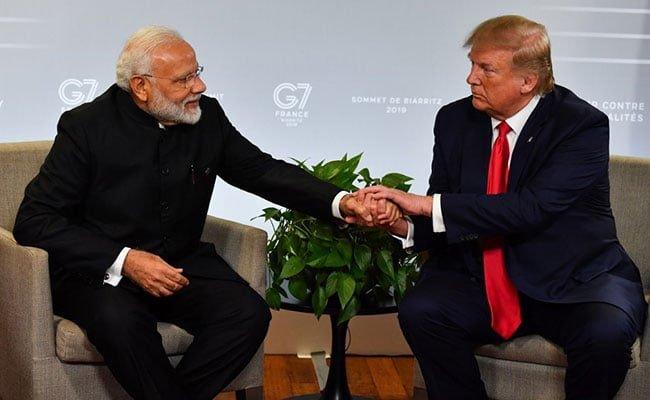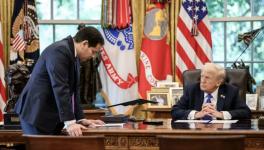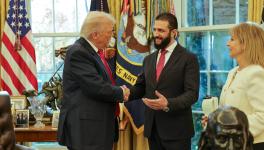Who Will Guard the Guards?

The brutal killing of George Floyd, an African-American, by the Minneapolis (Minnesota) Police Department has made me return to the question my late colleague Nirmal Mukarjee had raised some thirty years ago, in October 1990, in an article in Seminar, “Who will guard the guards?” Mukarjee was India’s last ICS officer and retired as Cabinet Secretary in 1980.
During our conversations in the early eighties, when we were fellows at Delhi’s Centre for Policy Research, I remember his deep concern about the deteriorating standards of Indian policing and the systematic subordination of the service to the political class. As I was almost thirty years younger than him, his words resounded in my ears like a truth from the Vedas. I wonder how he would have viewed things today had he been alive.
Thirty years is a long time in politics. And yet, little has changed in the debate, whether it be in India or the United States. In 1997, the former CBI director Joginder Singh lamented in the CBI Bulletin that, “It would be a travesty of justice to expect policemen to be angels in such an atmosphere and to hold them responsible for all that is happening in the country. Police are violent because society permits it and even wants the police to suppress violence with equal violence.”
Now consider United States President Donald Trump’s words. In the context of America-wide protests against the George Floyd incident he unequivocally recommended the following in a 1 June video-conference with governors and law-enforcement officials: “You have to dominate. If you don’t dominate, you’re wasting your time. They’re going to run over you, you’re going to look like a bunch of jerks.” He then reportedly scolded the governors and threatened to intervene in their states without, of course, considering if he had the authority. But his message was clear: “We’re strongly looking for arrests, we do have to get much tougher.”
Since there is so much talk lately in India about Indian-American bonhomie, particularly at the highest levels, it would be instructive see whether the two nations are actually comparable. Are the comparisons confined merely to their respective leaders’ mutual hugs, or do they stem from competitive failures in ensuring societal harmony because of majoritarian politics; in Trump’s case White supremacism, in Indian PM Modi’s case Hindu machismo? A more comprehensive comparison between the two nations may help remove many obfuscations that blur our vision.
For starters, much as we may love to bask in the reflected glory of our past, neither are we vishwaguru (wisdom-giver to the world) nor are we a superpower. The more we trumpet our ancient “wonders”, the more we expose ourselves to ridicule. If we do figure in international headlines, it is usually for all the wrong reasons. The George Floyd episode has given the world yet another opportunity to point to our own failings alongside America’s and, in the process, those of other democratic societies similarly afflicted. If inter-racial bitterness is a bane for America so too are inter-caste and inter-religious conflicts for India.
Barring these murky commonalities, India and America are very different. India’s per capita income is $2,200, America’s is $65,000. Population density in India is 412 per sq. km., in America it is 34. GDP-wise, the numbers are $2.9 trillion versus $21.5 trillion. On defence spending, $71 billion vis-à-vis $732 billion. Beyond these material parameters, India has just 73 years of democratic experience against 233 for America. And perhaps most tellingly, it is Indians who flock to America for jobs and naturalisation, not the other way around. Those of us who ridicule poor Bangladeshi migrants in India and label them “termites” ought to take note of this.
There are historical contradictions as well. In 1776, when Americans declared independence from Britain, the latter were just starting their 190-year domination of Indians. The Battle of Plassey had been fought only nineteen years earlier. By 1787, when the Americans were drafting the first written constitution in the world, the East India Company had already fought two colonial wars against Mysore. It would fight and win another two by the end of the century. In the following hundred years, first the East India Company and then the United Kingdom would establish effective control over all of South Asia. In the corresponding period, America resolved its federal problem in favour of an indissoluble federation.
Across a longer historical arc, the American experience is of course less of a match. India has a history that spans multiple millennia, while American history is barely 500 hundred years old. No wonder, then, that the Indian federal experiment, unlike America’s, is mind-boggling in its diversity. It has emerged out of both centrifugal and centripetal tendencies of the past two thousand years. The political scientists Susanne and Lloyd Rudolph had famously characterised India a “nation of regions”. The America experience, in contrast, is largely centripetal thanks to its changing frontiers fuelled by westward expansion, a phenomenon that has no parallel in the world.
India’s linguistic diversity is also maddening compared to the still primarily monolingual reality of the United States. English is the language of America, although it has never officially been declared as such. In recent years there have been demands to declare Spanish a second language in some states, but that is all. Before the United States was launched there was also talk of declaring German the official language of Pennsylvania. But it found limited traction. In fact, the proposal only asked for German translations of all government documents to accommodate Pennsylvania’s large community of German-speakers.
For all their differences, India and the United States share one important feature that ought to compel comparisons and mutual learning. That common feature is their weakness to build inclusive societies. Both are afflicted by the disease of majoritarianism and the symptoms are becoming more and more virulent. In America, it is expressed through White supremacism; in India, through Hindutva chauvinism. In America, African-Americans are at the receiving end; in India, the Scheduled Castes (Dalits) and Scheduled Tribes as well as the religious minorities, most notably, Muslims.
To be sure, the problem does not lie in their respective constitutions, which have adequate safeguards against discrimination, nor in the provisions that have been made for affirmative action or positive discrimination. Instead, the problem lies in with the manner in which racist-religious politics play out in both countries. The current global conservative ascendancy feeds the process. The only redeeming feature is that the liberal (an abusive term among some sections in India now) publics in both societies continue to battle for change, pushing in particular for structural reforms of the law and order machinery.
In America, public pressure now appears so strong that serious questions are being asked about police funding. The present practice of arming the police with surplus weapons of the army is under the scanner, for it has made the American police the most heavily-armed police force in the world. In the larger context, the taming of the gun lobby is also on the agenda. Much, of course, will depend upon how these demands are articulated in the forthcoming presidential debates and upon who ultimately wins, and with what promises.
In India, demands for police reform have a long history. They have been institutionalised through successive police commission reports, none of which are short of remedial suggestions. But political indifference, if not outright opposition, has always come in the way. It was as early as 1981 that a Police Commission Report highlighted the gravity of the problem of communalism in the Indian police force. Tasked with inquiring into the communal riots in Bhiwandi, Jalgaon and Mahad in Maharashtra in 1969, the report passed severe strictures against the special investigation squads that had been set up to investigate crimes committed in the course of these riots. It observed that these squads had “acted in a partial and biased manner against one community [Muslims]”.
Years later, a 1999 study conducted by senior police officer Vibhuti Narain Rai showed that Indian Muslims had little trust in police interventions in riot situations; they preferred the army instead. The same is evidently true in India today. In some sense, the danger is endemic, for alongside the communalisation of the police force there are also clear indications of its politicisation. Many suspect and fear that a similar process is unfolding in the Indian armed forces as well. God forbid such processes attain completion. For India will then have reached a point of no return. Pakistan’s experience offers a grim warning. The only hope against such runaway consolidation of power is our still vibrant—albeit beleaguered—public sphere, and the handful of stand-up comedians who bravely and unstintingly speak comic truth to ruthless power.
Postscript: George Floyd had his forerunner thirty years ago in Rodney King. The news of his brutalisation at the hands of the Los Angeles Police Department led to massive race riots in Cincinnati, Cleveland, Detroit, and Newark. Contemporary India has faced similar Hindu-Muslim riots. The Provincial Armed Constabulary (PAC) of Uttar Pradesh and the Bihar Military Police (BMP) have been accused of siding with Hindu rioters. Curfews in many cases turned out to be “comparative curfews”, meaning further harassment for Muslims. In the 1989 Bhagalpur riots, it was found that the Hindu police not only did not quell the violence, but actually participated in it. Allegedly, they did not even spare the families of their Muslim colleagues.
Still worse, as has been noted by historian Gyanendra Pandey in the case of Bihar, police records were meticulously destroyed to permanently foil any future inquiry. Given the current communal reality of Indian politics, no one should be surprised if police investigations into the communal riots that rocked Delhi in the last week of February are shoddily conducted. Let us also not forget that the raging fires and the loss of over 50 lives did not even register with Donald Trump, then in the midst of his official visit to India. But then Trump, like his host, is no apologist for inter-racial harmony, in his own country or elsewhere.
The author is senior fellow, Institute of Social Sciences, New Delhi. He was formerly ICSSR National Fellow and Professor of South Asian Studies at JNU. The views are personal.
Get the latest reports & analysis with people's perspective on Protests, movements & deep analytical videos, discussions of the current affairs in your Telegram app. Subscribe to NewsClick's Telegram channel & get Real-Time updates on stories, as they get published on our website.























